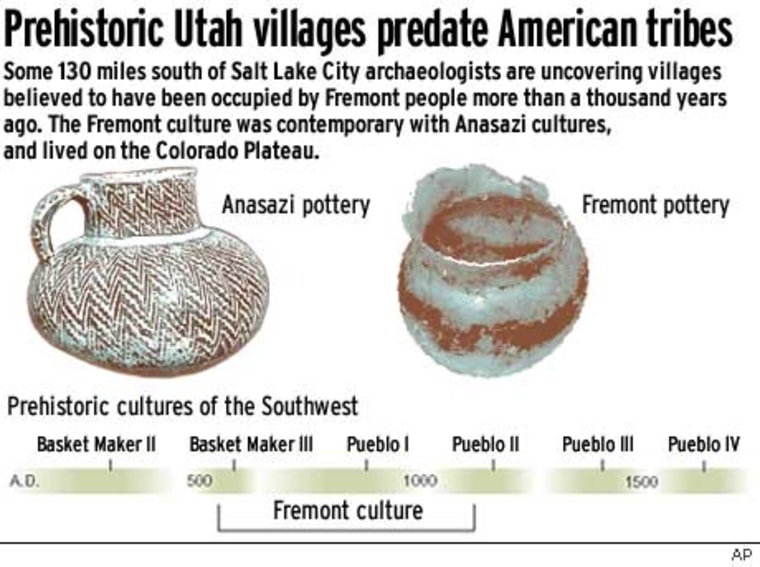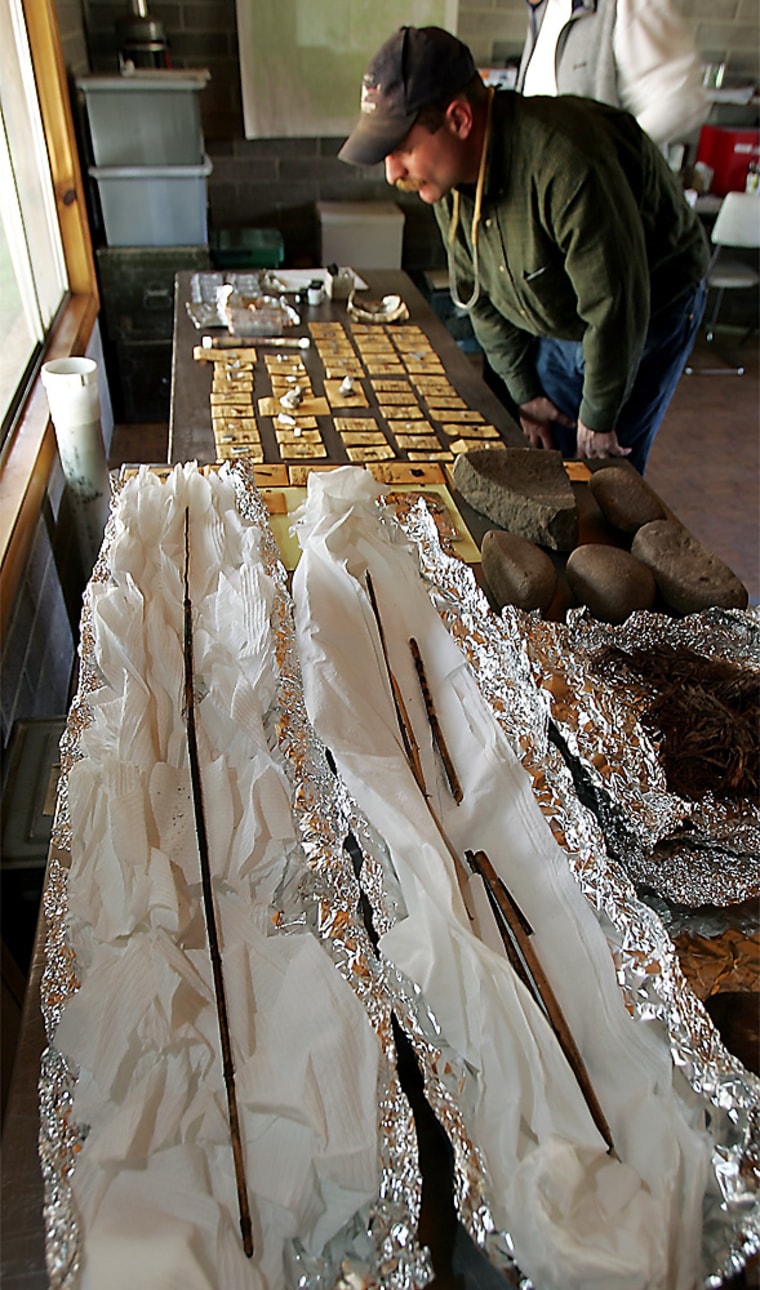Archaeologists led reporters into a remote canyon Wednesday to reveal an almost perfectly preserved picture of ancient life: stone pit houses, granaries and a bounty of artifacts kept secret for more than a half-century.
Hundreds of sites on a private ranch turned over to the state offer some of the best evidence of the little-understood Fremont culture, hunter-gatherers and farmers who lived mostly within the present-day borders of Utah.
Hundreds of rock art panels are scattered across the canyon along Range Creek, some colored in red, white, yellow, black and peach. On one panel, the ancient inhabitants etched spirals and human figures with miniature hands among animal figures.
“Many other places in the West have rock art panels, but hardly one of them doesn’t have someone’s name scratched across it. That’s what makes this place so unique,” Utah state archaeologist Kevin Jones said.
Archaeologists said the villages were occupied more than 1,000 years ago, and may be as old as 4,500 years.
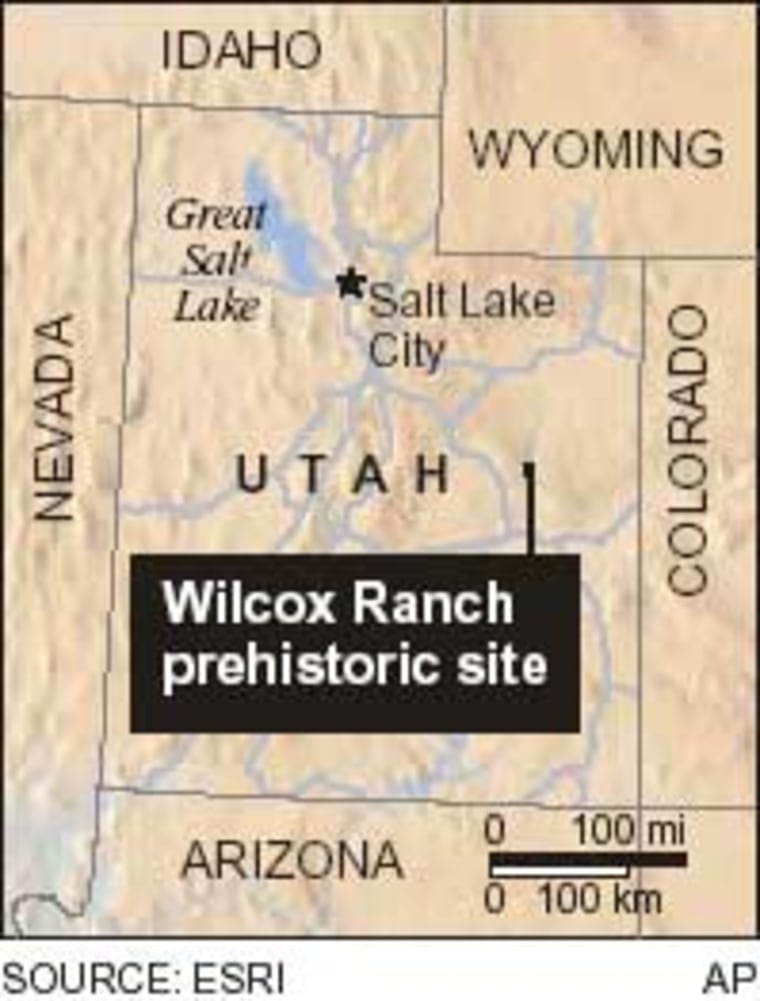
A caravan of news organizations traveled for two hours from the mining town of East Carbon City, over a serpentine thriller of a dirt road that topped an 8,200-foot mountain before dropping into the narrow canyon in Utah’s Book Cliffs region.
Officials kept known burial sites and human remains out of view of reporters and cameras, but within a single square mile of verdant meadows, archaeologists showed off one village site and said there were five more, where arrowheads, pottery shards and other artifacts can still be found lying on the ground.
Archaeologists said the occupation sites, which include granaries full of grass seed and corn, offer an unspoiled slice of life of the ancestors of modern American Indian tribes. The settlements are scattered along 12 miles of Range Creek and up side canyons.
“We’ve documented about 225 sites, and it’s just scratching the surface,” Utah state archaeologist Kevin Jones said. “There are hundreds of other sites.”
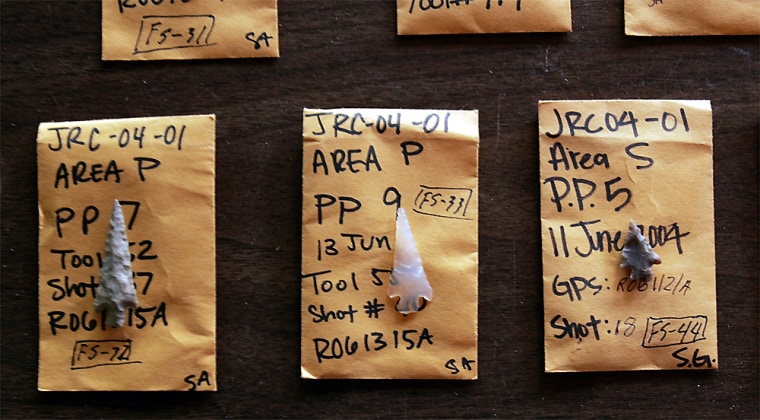
Hundreds of granaries, ranging from cupboard-sized to several yards across, are in some cases hundreds of feet up nearly inaccessible cliffs. They offer evidence, Jones said, that the people moved around seasonally and left stores of food.
The pit houses’ roofs of cedar and dirt collapsed long ago, but Jones said in their day they were “warm and snug in the winter and cool in the summer.”
The half-buried houses don’t have the grandeur of New Mexico’s Chaco Canyon or Colorado’s Mesa Verde, where overhanging cliffs shelter stacked stone houses. But they are remarkable in that they hold a treasure of information about the Fremont culture that has been untouched by looters.
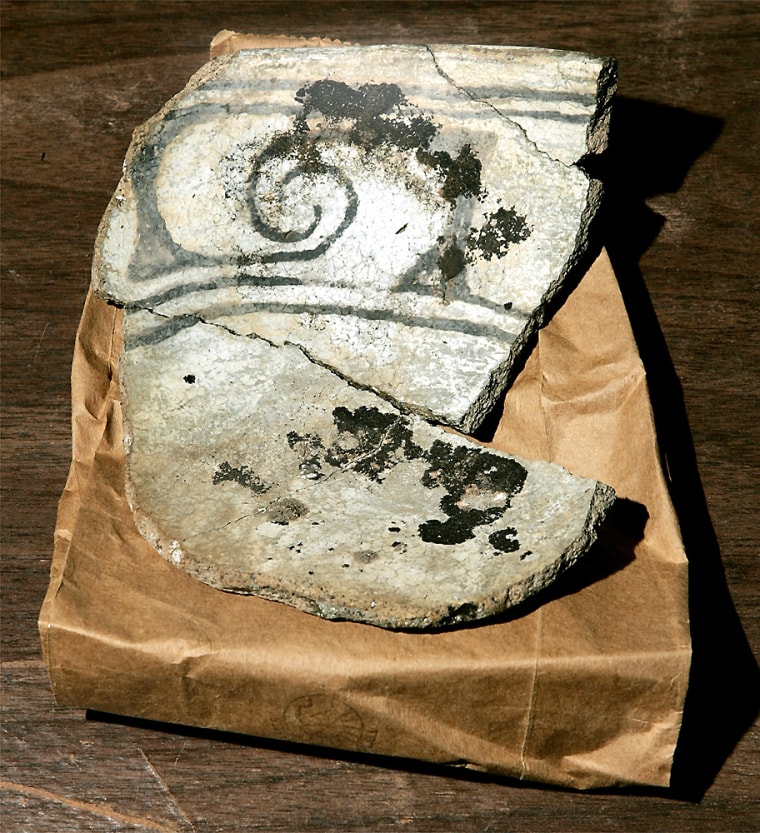
The Fremont people were efficient hunters, taking down deer, elk, bison and small game and leaving behind piles of animal bone waste, Jones said. They fished for abundant trout in Range Creek, using a hook and line or weirs. In their more advanced stage they grew corn, although cultivation could be risky in dry years or when bears raided stocks, he said.
Waldo Wilcox, the rancher who sold the land and returned Wednesday, kept the archaeological sites a closely guarded secret for more than 50 years.
“I looked at it like this: I wanted to keep it the way it is,” said Wilcox, 74, who moved to Green River and retired. “But when I die, I’m not going to have a lot to say about it. I finally decided I’ll take a little money and get out now.”
The San Francisco-based Trust for Public Land bought Wilcox’s 4,200-acre ranch for $2.5 million. The conservation group transferred the ranch to the Bureau of Land Management, which turned it over to Utah.
The deal calls for the ranch to be opened for public access, a subject certain to raise debate over the proper stewardship of a significant archaeological find.
Already, hikers have taken some arrowheads and disturbed others flagged on the ground, said University of Utah graduate student Joel Boomgarden, one of 35 students rushing to complete survey work in the canyon.
